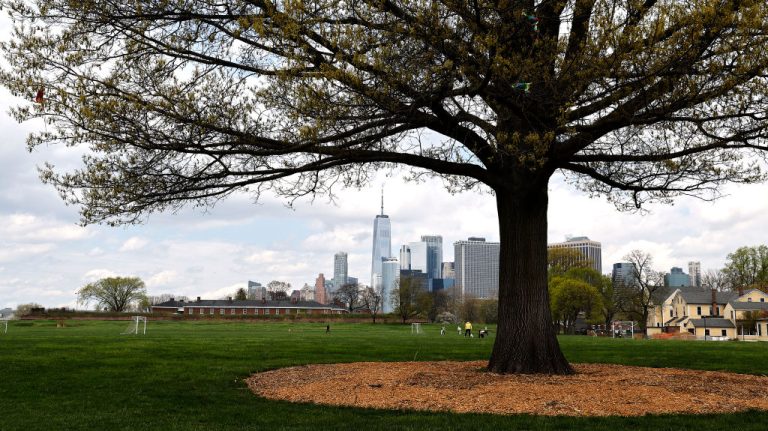According to a new study carried out by scientists at the Columbia Climate School’s Lamont-Doherty Earth Observatory, the majority of New York City’s roughly 7 million trees are emitting “volatile compounds” that — counterintuitively — do more harm than good for the city’s air quality due to how they interact with vehicular pollution.
The study singles out the city’s oak and sweetgum trees as culprits given the large amounts of isoprenes they produce.
“Harmless by themselves, isoprenes interact rapidly with polluting nitrogen oxides emitted by vehicles, buildings and industry to form ground-level ozone―a prime factor in many respiratory ailments, especially chronic bronchitis and asthma,” the study reads.
Róisín Commane, one of the study’s coauthors, told EurekAlert!, “We’re all for planting more trees, they bring so many good things. But if we’re not careful, we could make air quality worse.”
The study’s lead author, Dandan Wei, of the Columbia Climate School said, “There is no reason to think that trees don’t play a role in what’s in the air. We just didn’t have the tools before this to understand this particular aspect.”
READ MORE:
- US National Debt Surpasses $35 Trillion, Servicing it NOw Second-largest Budget Item
- Starbucks Struggles in China as Middle Class Spends Less
- Google Search is a Monopoly, Company Broke Antitrust Laws, Judge Rules
The science
Success
You are now signed up for our newsletter
Success
Check your email to complete sign up
Isoprene is a driver for common respiratory illnesses, and is created when compounds emitted by the oaks and sweetgums interact with nitrogen oxide pollution spewed by the city’s roughly 2 million registered vehicles.
Researchers listed chronic bronchitis and asthma as being the most common conditions.
The study concluded that if the city continues to plant oaks and sweetgums, isoprene levels in Manhattan would surge by a startling 140 percent and ground level ozone would spike by around 30 percent.
In Queens, isoprene and ozone levels could quadruple, researchers said.
The researchers say that oak trees emit 800 times more isoprene than maples, particularly when temperatures spike above 90 degrees in the city. Oaks make up 37 percent of the city’s trees while sweetgums make up around 17 percent.
After analyzing satellite imagery, combined with Parks Department data, the research team found that, during hot days, the amount of ground level ozone spikes.
The researchers stress that vehicle emissions, not the trees themselves, are to blame.
“If we lowered [nitrogen oxides] significantly, trees wouldn’t be a problem. We don’t want to convey the idea that trees pollute the air. It’s the cars.”
While the city has made some headway in reducing emissions in the city, at this rate it would take upwards of 80 years to see the improvements required, the researchers said.
“No quick fix appears to be imminent,” they added.







